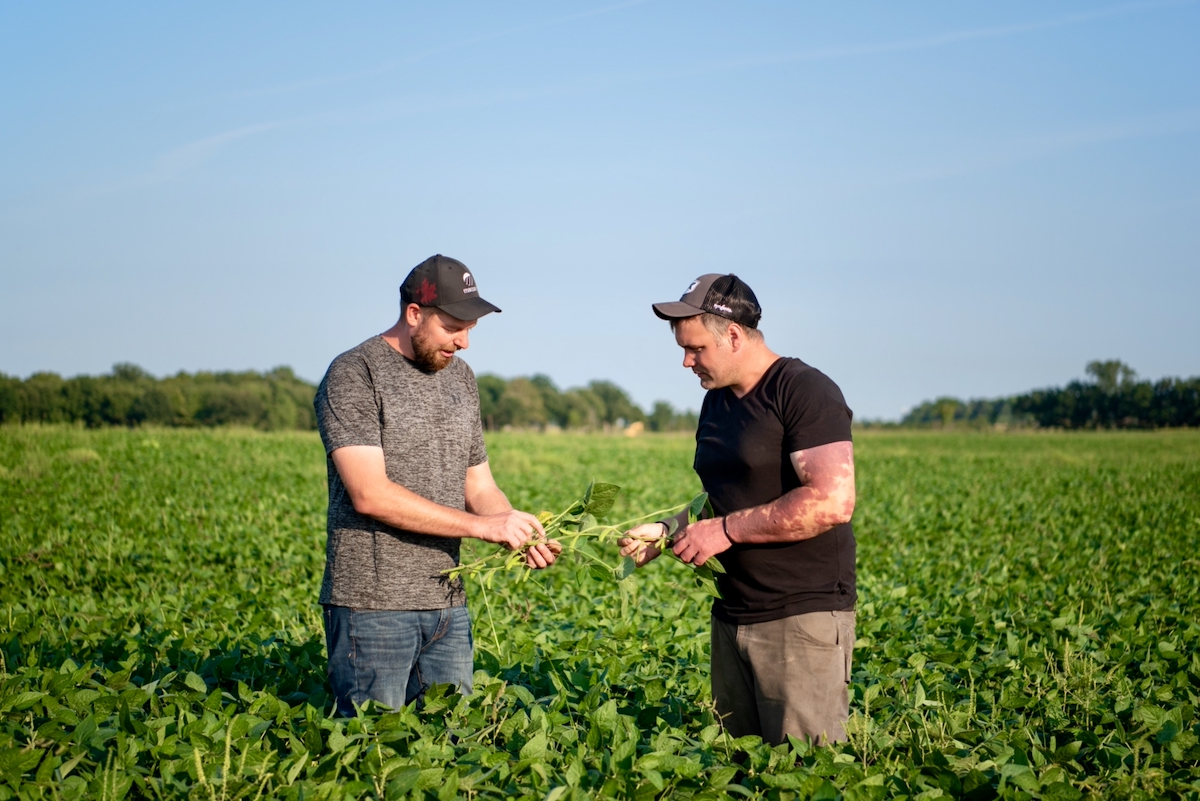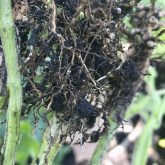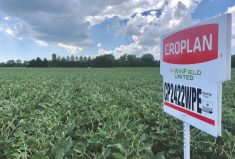The popular saying is that good things come in small packages, which exactly describes Canada in terms of its overall output as one of the world’s soybean producers.
Because good things do come from Canada. In fact, they may even be great things, thanks to our capabilities at producing high-quality identity-preserved, non-GMO soybeans, as we have demonstrated over the last two decades and more.
We have the expert producers who grow the soybeans, and grow them well. We have the infrastructure for segregation. And, after many years, we have a quality reputation among global consumers.
Read Also

Ontario farmers partner for success
Ontario business partners, Matt Bergman and DJ Wassenaar, have been farming together for 10 years. Their focus on integrating unconventional…
Despite all these positives, however, Canada, unlike the U.S., has not allowed health claims that promote the benefits of soy protein in human diets. But that changed in March 2015, when the country’s agri-food value chain received Health Canada’s approval to recognize soy protein’s benefit in the daily diets of Canadians.
Making the rounds of the Grain Farmers of Ontario’s “Spring Classic,” Soy 20/20 chief executive officer Jeff Schmalz was sharing the news, highlighting the journey that took more than three years to finally garner this important claim.
The Health Canada decision covering the claim is eight pages long, but of particular importance to the IP sector, including producers and processors, are three key paragraphs, cited from the document, “Assessment of a Health Claim About Soy Protein and Cholesterol Lowering”:
“The ‘daily amount’ referred to in the primary statement is 25 g of soy protein. This amount is based on the evidence available concerning the amount of soy protein shown to help reduce cholesterol. In this statement, the percentage of the daily amount of soy protein provided in one serving should be rounded to the nearest multiple of five per cent.
“The following additional statements could be placed adjacent to the primary statement, in letters up to twice the size and prominence of those in the primary statement:
- soy protein helps reduce/lower cholesterol
- high cholesterol is a risk factor for heart disease
- soy protein helps reduce/lower cholesterol, (which is) a risk factor for heart disease
“Foods and ingredients eligible for the claim include soy beverages, tofu, miso, tempeh, natto, soy cheese, soy nuts, isolated soy protein (ISP), soy protein concentrate (SPC), textured soy protein (TSP) and soy flour (SF). Soy sauce and soybean oil are excluded from the claim because they lack substantial amounts of soy protein.”
The claim is particularly timely. Statis-tics Canada numbers indicate 39 per cent of Canadians between the ages six and 79 have unhealthy levels of cholesterol in their systems.
Despite those numbers, Schmalz says navigating the specific disease risk-reduction claim has been a difficult process, since researchers are consulted for critiques and analysis. Although it took more than three years from application to approval, Schmalz notes that process is not out of line with other, similar claims applications.
Real work begins
Now that the claim is in hand, the next phase starts with a three-year communications plan to reach consumers and help them better understand the benefits of soy foods. Knowing that Canada is a leading producer of food-grade soybeans can’t hurt either. The communications strategy involves four or five of the larger Canadian companies involved with IP soybean processing, with each company’s marketing department lending its expertise to the plan.
“If we have a successful media plan, we’ll bring more consumers to the table, and that’s going right back to what gets planted in the ground,” says Schmalz, based at Soy 20/20’s headquarters in Guelph. “We have also applied for some government funding, which is going to give us the wherewithal to approach consumers. And then another part of the strategy is determining what we’re going to do on packaging for a soy milk or tofu container, and we’ve designed a new logo for that.”
The overall objective is to grow the sector, of course. Production of IP soybeans has been relatively flat for the last five years (industry members suspected it may have fallen to just 20 per cent of total soybean production in Canada in 2013), and any growth has come from newer products and not the beverage sector. That’s the key driver, not just where the health claim is concerned, but as it pertains to the domestic soy food market. North American tastes tend to lean away from soy foods, known more for their “beany” taste than their health benefits. Another factor is more cultural, in that our diets don’t tend to include tofu or miso, or natto or tempeh. The easier sell on this continent is the flavoured soy-beverage category.
There’s also the trend in protein consumption that’s been highlighted by various individuals during the last 16 years. World protein consumption, fuelled by rising Indian and Chinese demand, leads to a much more bullish outlook on protein.
“We think that over the next 10 to 20 years, there’s going to be an almost unfettered, compound growth in the market because of the insatiable demand for protein,” says Schmalz. “And much of that demand will be coming from China and India because they’re also looking for our quality feed to feed their animals and get them to slaughter.”
But in many cases within the agri-food sector, a business has to learn to walk before it can run. David Hendrick, CEO and board chair of Sevita Foods, based in Inker-man, Ont., also notes there are currently no large-scale processors of food-grade soybeans in Canada. If one of the current processors steps up, particularly on soy beverages, this dynamic could change dramatically.
“We want to remember the context of this claim — it’s a Canadian claim,” says Hendrick, who helped initiate food-grade exports to Japan in the 1990s. “We don’t want to get carried away that this is going to do something for us in China or Japan — it’s a domestic regulatory decision that’s potentially a very positive one in Canada.”
In the early 2000s, when the U.S. came out with its health claim, consumption of soy foods rapidly increased. Will we start seeing higher consumption rates of soy foods in Canada? Hendrick says it will depend on the marketing and branding, which in turn needs to be focused on convincing Canadian consumers about these benefits.
“If we do a good job on those two aspects, I think that this health claim will be a positive addition to all of the positive things attributable to food-grade soybeans,” says Hendrick. “I’m not sure the health claim will necessarily increase premiums, as processors need to compete in their sector. Whether you’re going to use those beans for Canadian end use, U.S. end use, or Japanese end use, essentially the premiums are within the same relative framework.
Although he doesn’t think the health claim is going to mark that big a change in premiums, Hendrick is interested to see whether the demand and the market requirement increase.
Hendrick says that perhaps the Can-ad-ian IP sector has spent too much of its focus on Japan.
That’s a potential additional benefit of the health claim, encouraging the Can-adian sector to stabilize its domestic opportunities, yet still be an opening line in discussions about increasing exports to other countries.
Processing pull
One person’s potential is another person’s stumbling block, however, and Hendrick still points to the lack of a large-scale processor in Canada as a key restraint on the push for increased domes-tic consumption. That picture is the same whether it’s IP soybeans or a new wheat variety for Eastern Canada. It’s always easier to launch a product when part of the industry is pulling it through the value chain as a demand, rather than growers or farm organizations trying to push it through as a supply. But just as Hendrick is quick to identify it as a barrier, he also suggests there’s an industry pull being created with the health claim.
“If you build it they will come,” says Hendrick. “The health claim has now been built by Health Canada and Soy 20/20, and now, if there’s an indication that the consumer is really going to change their habits and significantly increase consumption, then the infrastructure will come.”
Right now, the focus of this story is centred on the health claim and the picture of the industry going forward. Does this move favour Ontario and Quebec (because they’re the primary production region for IP soybeans)?
That’s likely a short-term fact. Could it help develop IP soybeans in Manitoba or the Maritimes? That remains to be seen. Hendrick insists the processing picture must become clearer first, then production may increase, whether you’re talking Ontario, Quebec, Manitoba or Prince Edward Island.
But as Schmalz notes, Ontario and Quebec are the leaders in the IP soybean sector, and have been for years for one very good reason: agronomics. The growing season, even in western Quebec or eastern Ontario is much longer than on the Prairies, and that continues to be a major consideration despite thee dramatic enhancements in shorter-season soybean varieties in the last five to 10 years.
That longer growing season does a lot to drive protein levels, and when it comes to IP soybeans, it’s all about the protein.
“There’s a lot of variety work going on — and the West is a new frontier for soybeans,” says Schmalz, adding that there were about 250,000 acres planted in Saskatchewan in 2015. “And I’ve seen projections over the next five years for dramatic increases in that volume, and it’ll be coming out of canola.”
This article first appeared in the October 2015 issue of Soybean Guide
















